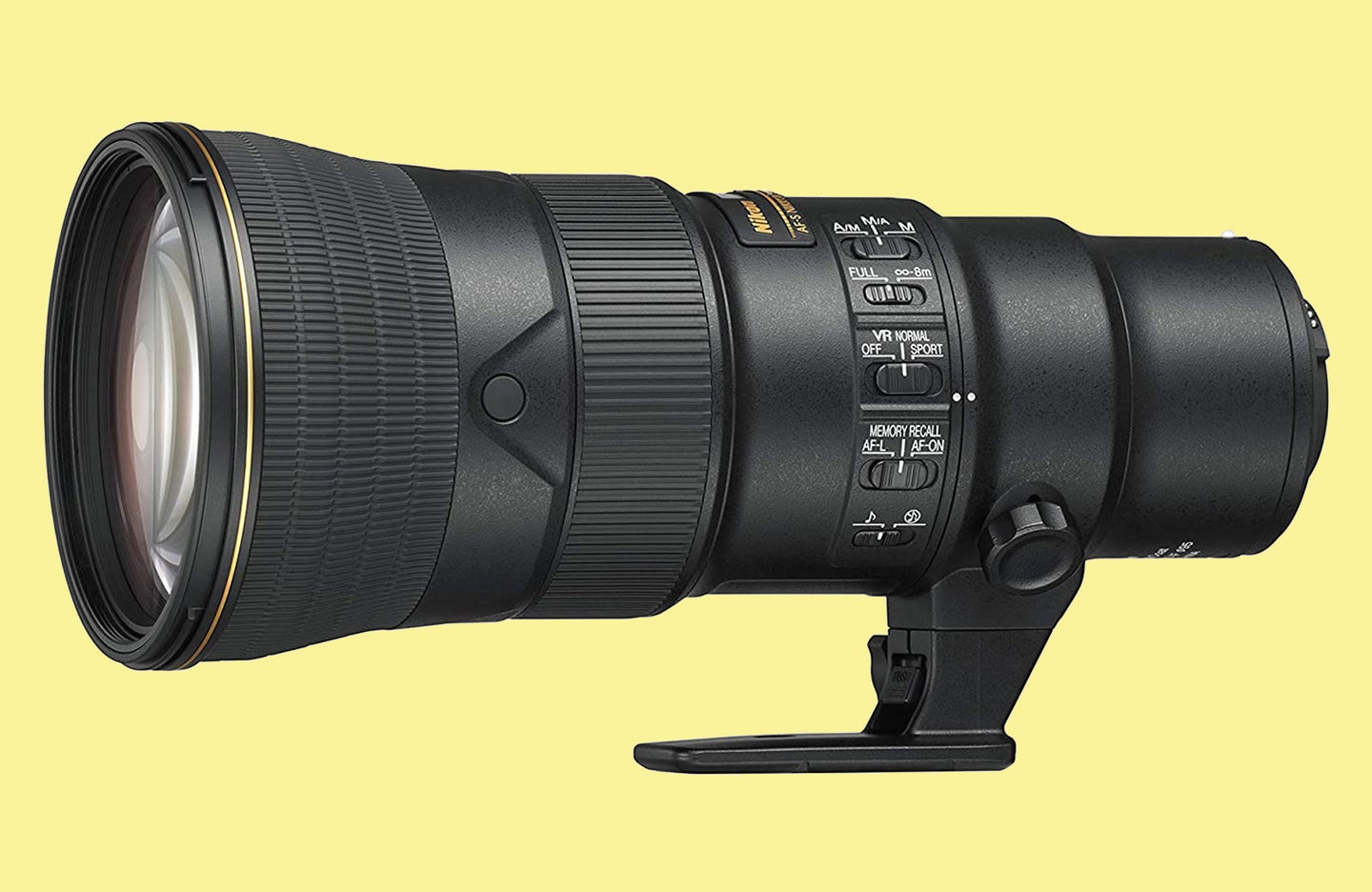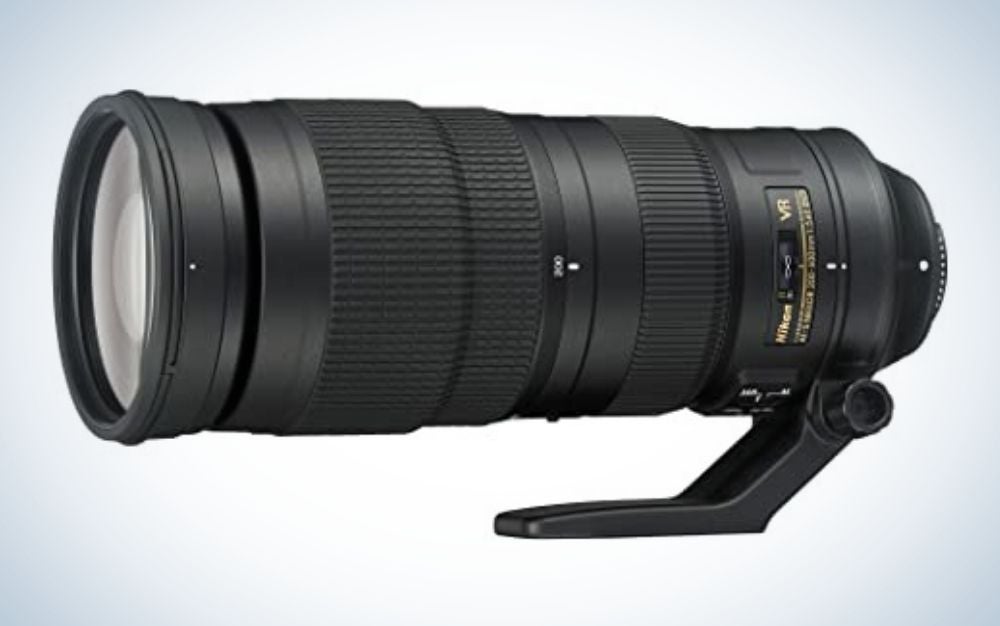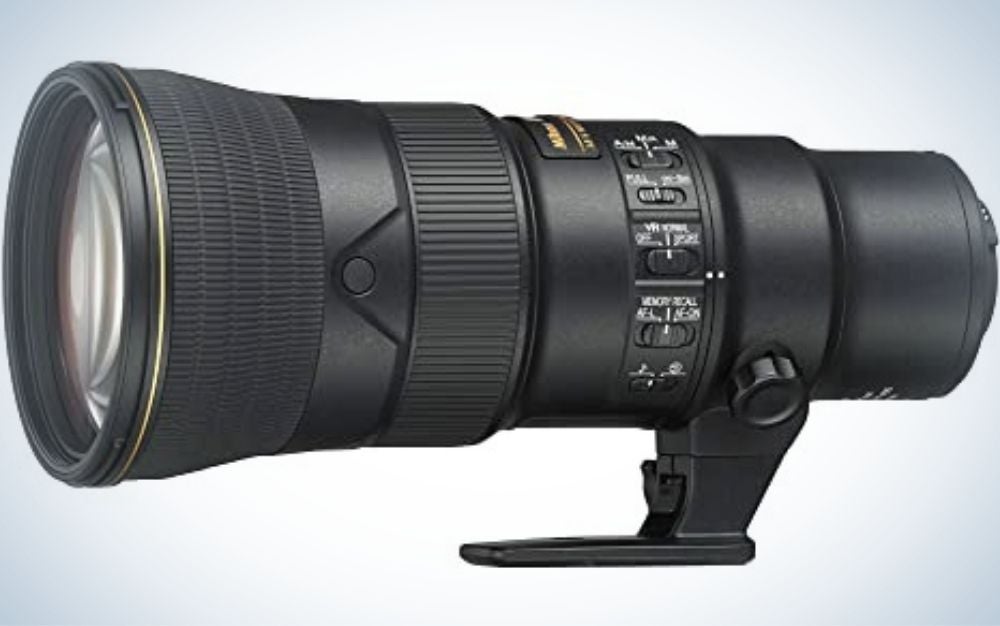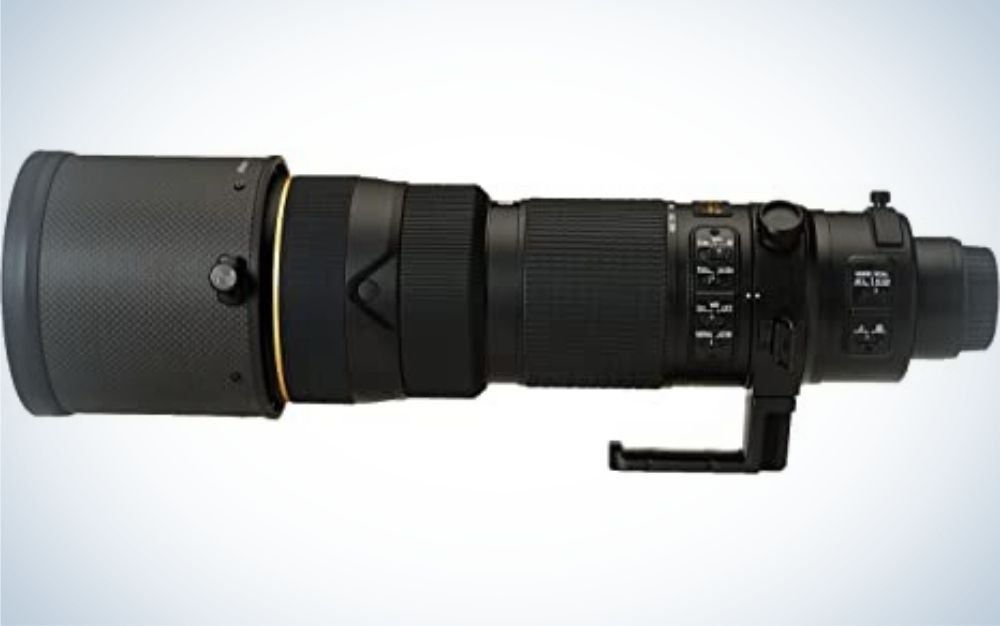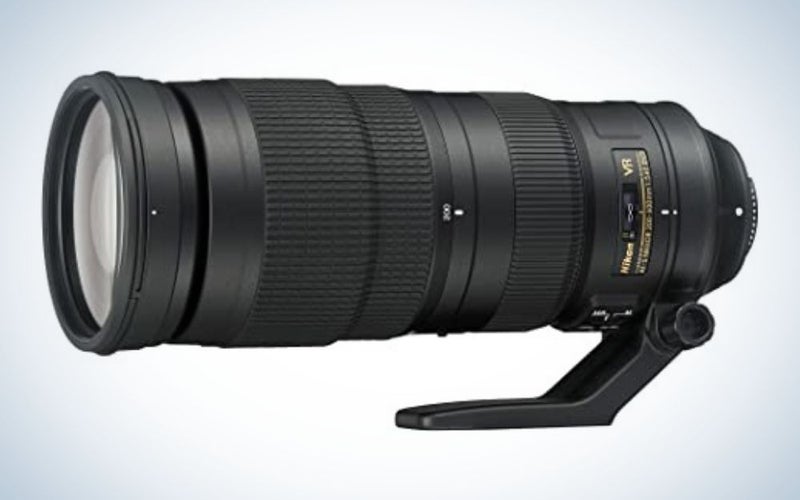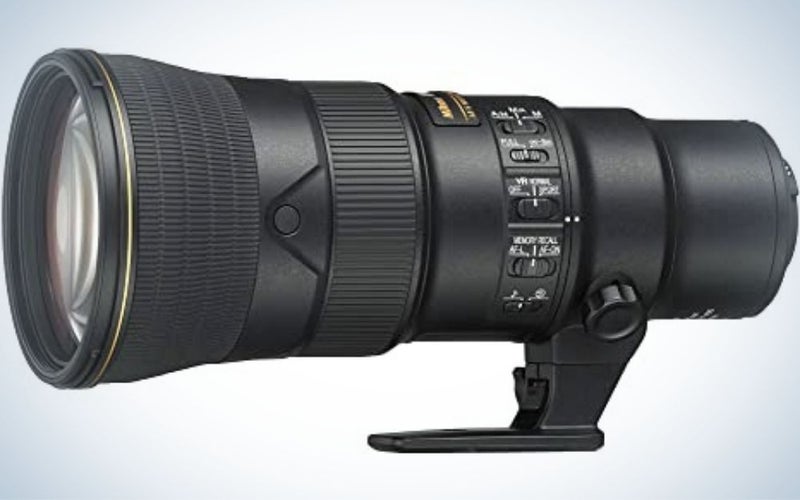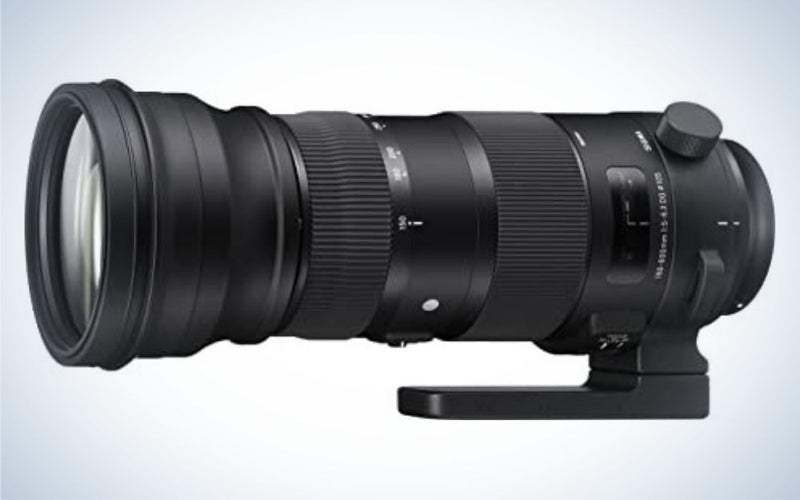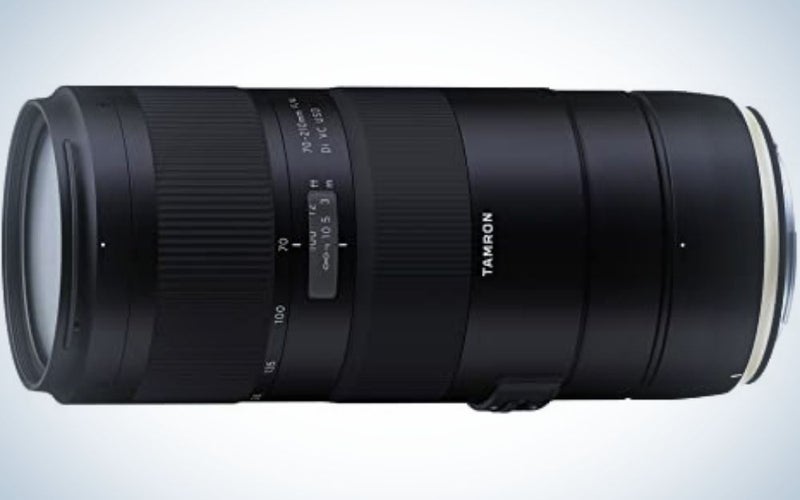Nothing beats using a telephoto lens when it comes to getting closer to the action. The unrivaled range and versatility of the telephoto range have made these lenses a staple in photographers’ camera bags and wish lists since the advent of modern photography. Whether your subject is people, wildlife, or sports, a telephoto lens bestows the ability to narrow the field of view, isolate the subject, and allow the photographer to remain at a comfortable distance. These best telephoto lenses for Nikon will set you up for success regardless of your genre.
- Best overall: Nikon AF-S NIKKOR 200-500mm f/5.6E ED VR
- Best for wildlife: Nikon AF-S NIKKOR 500mm f/5.6E PF ED VR
- Best value: Nikon AF-S NIKKOR 200-400mm f/4G ED VR II
- Best third-party: Sigma 150-600mm f/5-6.3 DG OS HSM Sports
- Best on a budget: Tamron 70-210mm F/4 Di VC
Things to consider before buying a Nikon telephoto lens:
No other category of lenses comprises such a vast variety of price, weight, size, range, and quality than telephotos. With all there is to consider, the best thing one can do to narrow the field of contenders is first to understand the intended use of the lens. That will put you in a much better position to decide based on the factors below. Whichever model you pick, it will be a great companion to the best Nikon cameras.
Budget
Nothing turns away the average consumer from telephoto lenses more than price. These elite lenses are notoriously expensive, especially those with larger maximum apertures. But with the right compromises, there are gems to be found. Nothing can truly match the optical quality or performance of a super-telephoto prime, but they are also inconveniently large, jaw-droppingly expensive, heavy, and less versatile than, say, a telephoto zoom. Knowing your budget and understanding the subjects you want to shoot are the first steps to finding a telephoto lens that will keep you happy and busy for years.
F-mount versus Z-mount
Nikon’s Z-mount development has lagged behind Sony and Canon for years. And although there will no doubt be some impressive Z-mount telephotos introduced in the future, right now, the F-mount is king. Thankfully Nikon has an FTZ adapter that will unite legacy F-mount lenses with the newer Z-mount mirrorless cameras. As a result, there is an impressive 60 years worth of F-mount lenses that are compatible with the new Nikon Z system. The FTZ adapter also allows these older AF-S lenses to benefit from the faster autofocus, silent shooting, low light performance, and in-camera stabilization of the Z camera bodies.
Prime versus zoom
Choosing the right telephoto will be heavily influenced by your intended subject. If you want versatility, zooms are incomparable, but they can lack the image quality and performance of primes. Primes, on the other hand, even though they tend to outperform zooms, can be frustratingly difficult to use for the uninitiated. Therefore, before any final purchase, one must consider the subject matter involved and the preferred style of photography. If you want to be mobile and shoot a variety of disparate subjects, a telephoto zoom is your best bet. However, if you plan to stay stationary and let the action come to you, a telephoto prime might be a better option.
Weight
Along with considering your preferred shooting style and intended subject matter, the weight of your kit should not be ignored. Some telephoto lenses can weigh in excess of seven pounds, which can quickly put a damper on your photographic experience if you’re not up to the task of wielding one. Of course, not everyone is looking to handhold a telephoto lens. Tripods with gimbals or monopods will increase the useability of any lens, but you still have to bring it to where the action is. And if you can’t imagine yourself lugging around a small house cat to take sports and wildlife images, it might be best to seriously consider a lighter and more mobile option.
Here are our picks for the best telephoto lenses for Nikon in 2022:
Best Overall: Nikon AF-S NIKKOR 200-500mm f/5.6E ED VR
Nikon
Why it made the cut: The Nikon AF-S NIKKOR 200-500mm f/5.6E ED VR has insane reach, quality optics, and constant aperture, all for a bargain. No other lens for Nikon cameras matches these features for the price.
Key Features
- Weight: 5.07 lbs / 2.3 kg
- Lens mount: Nikon F
- Maximum aperture: f/5.6
- Minimum focusing distance: 7.22 ft / 2.2 m
Pros
- Large zoom range
- Constant f/5.6 aperture
- Impressive sharpness
- Low price
Cons
- Heavy and large
- Not fully weather sealed
Released in 2015, the Nikon 200-500mm f/5.6E ED VR is still the reigning king of super-telephoto zooms. Nowhere else on the market can you find a lens of comparable quality, versatility, and price. Its longevity in the market and lack of a suitable replacement shows just how much confidence Nikon has in this lens. It’s optically sharper, lighter, and cheaper than both the Tamron and Sigma 150-600mm, although it does lack the range. And for those who find the reach of the aging Nikon 80-400mm lacking, you’ll be pleased to hear that the 200-500mm surpasses it in image quality on the top end, is quite a bit cheaper, and has an extra 100mm to boot.
Though this lens doesn’t come without its share of flaws, they have almost nothing to do with image quality or performance. For one, it’s still quite a heavy and a rather large lens compared to Nikon’s 80-400mm f/4.5-5.6G ED VR. The 200-500mm focal range is also not as versatile, but this depends entirely on your subjects and what other lenses you own. The only other negative with this lens is that it’s not fully weather sealed, but at such an impressive price, it’s worth the plunge. What makes this lens even more exciting is pairing it with a DX body, where the range increases to 300-750mm at f/5.6! Nikon has made a bonafide winner in this lens, and if you need a super-telephoto, look no further.
Best for wildlife: Nikon AF-S NIKKOR 500mm f/5.6E PF ED VR
Nikon
Why it made the cut: It’s the smallest, lightest, full-frame 500mm (non-catadioptric) prime lens ever created.
Key Features
- Weight: 3.21 lbs / 1.46 kg
- Lens mount: Nikon F
- Maximum aperture: f/5.6
- Minimum focusing distance: 9.84 ft / 3 m
Pros
- Lightweight
- Compact
- Impressive optics
- Fully weather-sealed
Cons
- Expensive
- Less versatile
Super-telephoto lenses have always been prohibitively expensive, available to only the elite few who have the budget and back to carry them. These lenses are very much the pinnacle of optical technology, but they are simply out of reach for the average photographer. Nikon has recently started introducing their version of compact super-telephotos using their Phase Fresnel technology, which is their attempt at miniaturizing both the size and expense of these monster lenses. The Nikon 500mm f/5.6E PF ED VR is the latest entry using this tech. At nearly a third of the price of the 500mm f/4E FL ED VR Lens, the Phase Fresnel variant finally bridges the gap between superior quality glass and affordability.
To that end, the 500mm f/5.6E PF ED VR has all the performance of its bigger, more expensive brethren at a fraction of the size, weight, and, most importantly, cost. Being able to handhold a 500mm lens for any length of time is impressive, and that’s what makes this lens so incredibly versatile for sports and wildlife photographers. The optics are solid, and when using it on front-lit subjects, you’ll have a hard time differentiating its performance compared to the bigger 500mm f/4E FL ED VR. Focus speed does take a noticeable dip, especially when using teleconverters, but pre-focusing to get in the general area all but cancels this issue. The build quality and features of this lens are just as impressive as the standard f/4 super-telephotos. And its ability to use teleconverters and the FTZ adapter for the newer Z mirrorless cameras is an excellent addition. Overall, the 500mm f/5.6E PF ED VR is an impressive addition to the Nikon family and should be highly considered for avid wildlife and sports photographers looking for big telephoto performance in a small package.
Best value: Nikon AF-S NIKKOR 200-400mm f/4G ED VR II
Nikon
Why it made the cut: It’s one of the best super-telephoto zooms ever created. Now officially discontinued, the used market is flooded with heavily discounted prime examples of this optical masterpiece.
Key Features
- Weight: 7.41 lbs / 3.36 kg
- Lens mount: Nikon F
- Maximum aperture: f/4
- Minimum focusing distance: 6.6 ft / 1.95 m
Pros
- Wicked sharp
- Constant f/4 aperture
- All internal zoom
- Works well with teleconverters
Cons
- Heavy and large
- Sharpness can be finicky at great distances
Announced in 2010 and replaced in 2018 by the 180-400mm f/4E TC 1.4, the Nikon 200-400 f/4G ED VR II is definitely a little long in the tooth. But don’t let its age deceive you. This lens is still an optical masterpiece that can now be had for less than half of its original MSRP. That puts it in direct competition with Nikon’s 80-400mm f/4.5-5.6G ED VR, which is why, as of writing this, the 200-400 f/4G ED VR II is such a deal. It’s an insanely sharp, fast, consistent, and well-built lens that has been the optimum choice for years by professional sports and wildlife photographers alike.
With the addition of a 1.4x teleconverter, this lens can easily perform as well as the larger 500 and 600mm f/4 primes in Nikon’s catalog without noticeable losses in autofocus speed or image quality. Its versatility increases further when paired with an APS-C camera, becoming a 300-600mm f/4 or a 420-840mm f/5.6 with a 1.4x teleconverter. Let that sink in for a moment.
In a time when legacy F mount lenses are nearing the end of their life, relics like the 200-400 f/4G ED VR II are being updated and improved by newer (read more expensive) lenses. But for the casual or hobbyist photographer, this is a huge boon, especially if you are a Nikon mirrorless owner. With the addition of Nikon’s FTZ adapter, any Z-mount camera can accept this lens as if it were a Z-mount itself, further increasing its already astounding versatility. If you’re in the market for a zoom lens with 400mm of reach, you’d be hard-pressed to find a better alternative than this lens.
Best third-party: Sigma 150-600mm f/5-6.3 DG OS HSM Sports
Sigma
Why it made the cut: This Sigma telephoto offering has excellent value, superb build quality, extreme zoom range, and professional level performance.
Key Features
- Weight: 6.29 lbs / 2.86 kg
- Lens mount: Nikon F
- Maximum aperture: Variable f/5 to f/6.3
- Minimum focusing distance: 8.53 ft / 2.6 m
Pros
- Huge zoom range
- Rugged build
- Great value for money
- Superb image quality
Cons
- Cumbersome and heavy
- f/6.3 starts around 320mm
Since its introduction in late 2014, the Sigma 150-600mm Sports lens has been the go-to third-party telephoto zoom for avid wildlife photographers across all camera platforms. And for good reasons, as it’s extremely well built, has excellent optical quality, both autofocus and image stabilization are exceptional, and its zoom range is massive. Although it’s nearly double the price of its twin, the Sigma 150-600mm Contemporary, the Sports version more than makes up for this increased cost with faster focus, greater color representation, less distortion, and better detail fidelity. It also boasts a completely dust and splash-proof construction, with added repellent coatings to both the front and rear elements.
It is a heavy lens, though, and you might want to think twice about trying to handhold it for any extended period of time. This lens will undoubtedly handle better on a gimbal or sidekick mount, bean bag, or stationary tripod. The Sports version also benefits from its ability to be operated as both a traditional twist zoom or a push-pull, and the zoom lock can be engaged at any focal length. Lest you think that was all, it also can be customized and updated through Sigma’s USB dock, and Sigma also offers a lens mount conversion service to switch between Canon, Nikon, Sony, Sigma, and Pentax. There’s really not much to criticize about this lens. If you have the room in your camera bag, the forearm strength, and the budget, the Sigma 150-600mm Sports lens would be an exceptional addition to anyone’s kit.
Best on a budget: Tamron 70-210mm F/4 Di VC
Tamron
Why it made the cut: This Tamron lens has competitive performance at a fraction of the price. It is a great all-around telephoto zoom that makes compromises in the right areas.
Key Features
- Weight: 1.87 lbs / 850 g
- Lens mount: Nikon F
- Maximum aperture: f/4
- Minimum focusing distance: 3.12 ft / 1 m
Pros
- Inexpensive
- Weather sealed
- Good image quality
- All internal zoom
Cons
- Slightly flare prone
- Funky ergonomics
It wouldn’t be a telephoto lens roundup without at least one 70-200mm, and this offering from Tamron packs a lot of features into an impressively inexpensive package. The main reason for buying an f/4 version of a 70-200mm lens is weight savings due to the decreased amount of glass needed and price savings due to the same factors. The Tamron 70-210mm F/4 Di VC has excellent magnification, close minimum focusing distance, appealing bokeh, quiet autofocus, weather sealing, distortion control, and competitive pricing with an impressive six-year warranty. It’s frankly incredible that its nearest competitor, the Nikon 70-200mm f/4G ED VR Lens, is twice the price but nowhere near twice the lens.
To get to this attractive and very competitive price point, Tamron had to make a few sacrifices in the construction, which affected image quality, though not enough to warrant any disregard. Make no mistake; this lens stands up to its competition. The image quality only begins to suffer when one pushes its limits by over-cropping. And, as is often the case with lenses in a budget category, one copy of the lens can be of different quality off the production line than others, leading to a “luck of the draw” scenario. But most users of this lens herald its image quality based on its price point. Its compatibility with Tamron’s Tap In Console means that future firmware updates can tune out any issues users may have with performance defects. Overall, this lens represents an impressive jump in quality and performance from a typical entry-level 55-200mm kit zoom.
FAQs
Q: How many times magnification is a 600mm lens?
It first helps to know what we’re comparing the magnification to in order to answer that question. Our eyes have a field of view and magnification roughly equal to a 50mm lens. So to find out the magnification factor of any lens, you simply divide the focal length of the lens you want to measure by 50. In this particular case, a 600mm lens has a magnification of 12 times because 600/50=12. Putting it another way, a 600mm lens magnifies what we typically can see with our unaided eyes by a factor of 12.
Q: What are telephoto lenses best for?
Telephoto lenses are best for magnifying subjects that are far away. Often they are used when you cannot be physically close to the subject you want to take a picture of. For example, with wildlife, it’s prohibitive in many cases to be physically close. Using a telephoto lens has the effect of bringing wildlife visually closer without actually having to be there physically.
Another reason for using telephoto lenses is the positive effect they can have on blurring the background and helping to isolate the subject. When using a wide angle lens, it’s harder to isolate the subject because with the increased field of view comes an increased apparent focus of the entire scene. But with a telephoto lens, the photographer can narrow the field of view, and with a phenomenon called telephoto compression can, in effect, make the background appear blurry and help isolate the subject.
Q: Are all zoom lenses telephoto?
No, not all zoom lenses are telephoto. The word telephoto applies to lenses with a greater focal length than that of our eyes. Our eyes are roughly equivalent to a 50mm lens, but the consensus is that the telephoto category of lenses starts around 70mm. There are plenty of zoom lenses that are not telephoto lenses. For example, wide zoom lenses can range from 11-40mm, and standard zoom lenses can range from 24-105, overlapping slightly into the telephoto range.
Methodology
There were a lot of factors that went into determining the best telephoto lenses for Nikon cameras. None more so than mount type. Nikon has not introduced Z-mount alternatives for many of their telephoto lenses, leading to F-mount lenses being featured exclusively on this list. What Nikon lacks in Z-mount telephotos, they more than make up for with unique, great performing, and budget-conscious F-mount lenses. And with the addition of the FTZ adapter, more lenses are available for use with their mirrorless cameras than any other camera manufacturer. Versatility and budget were also heavily considered, as telephoto lenses can be notoriously expensive and limiting. We addressed these factors and provided options with exemplary quality, uniqueness, and performance, all while remaining relatively affordable.
Final Thoughts
Understanding what you want to shoot and the environment you’ll be shooting in will be the biggest key in determining which telephoto lens to invest in. For most of us, the likely option will be a telephoto zoom, one lens with which to cover a broad range of possibilities, small and light enough to carry nearly anywhere, all while falling within your individual budget constraints.
The post Best telephoto lenses for Nikon in 2022 appeared first on Popular Photography.
